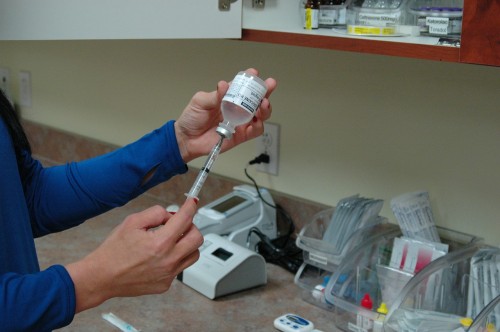By Bhavik Shah
“Foot drop” due to injured sciatic nerve because of a faulty technique of intramuscular injection is prevalent in developing countries. Some important Global Health issues related to this problem are discussed here.
Indiscriminate use of injections
Oral medications are easier to administer and are equally effective in treating many conditions without causing pain or compromising skin barrier, yet the use of intramuscular injections has increased dramatically in the developing world. Some established facts leading to injection overuse include prescriber misconceptions regarding “strength” of injections, rapid onset of action and desire to meet patient expectations. [1] Such indiscriminate use of injections needs to stop.
Limited training in proper injection technique
The most common scenario for sciatic nerve injection injury occurs when the site of needle insertion is located more medial and/or inferior to the recommended site on the upper and outer quadrant of the buttock. [2] As such injuries are easily preventable, proper training to develop an anatomical understanding of the sciatic nerve is essential.
Inequality in access to quality healthcare
Inadequate access to appropriate healthcare in vulnerable communities is a major constraint for the health of poor and marginalized groups in low and middle-income countries (LMICs). [3] Access to quality healthcare requires improvement in physical infrastructure, appropriate training for rural providers, and assistance to patients accessing care.
References:
- Comparison of pharmacokinetics and efficacy of oral and injectable medicine. (2015). [online] Available at: http://www.who.int/occupational_health/activities/5injvsora.pdf [Accessed 3 Sep. 2015].
- Kline DG, Kim D, Midha R, Harsh C, Tiel R. Management and results of sciatic nerve injuries: a 24-year experience. J Neurosurg. 1998 Jul; 89(1):13–23.
- Haddad S, Narayana D, Mohindra K. Reducing inequalities in health and access to health care in a rural Indian community: An India-Canada collaborative action research project. BMC Int Health Hum Rights. 2011; 11 Suppl 2: S3.